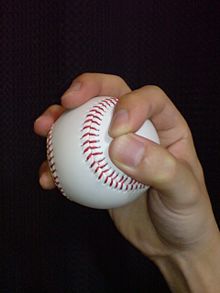During this frenzy of rumors, proposals, and deals, pundits, commentators, and especially fans forget about the affects trades have on the players. During this part of the summer, front offices play the part of CIA analysts dissecting mountains of information, scouts perform necessary reconnaissance of prospects, and general managers play the role of, well, general. If these groups execute their jobs properly trades are made, teams looking for playoff berths make improvements, and those wistfully far from the post-season build for the future.
In my opinion, the most recent successful and crafty teams have been the Tampa Bay Rays, Toronto Blue Jays, Atlanta Braves, San Francisco Giants, and Texas Rangers. These teams usually find themselves as serious buyers and sellers around the trade deadline as opposed to the off-season when free-agency is the main focus. Mid-level or poorer teams usually relinquish players to free-agency, but during the week leading up to the trade deadline, they make more noise due to their ability to afford players received in trades even if they cannot pony up enough money to sign them to long-term contracts. To put it a better way, the week leading up to July 31st is a free-for-all.
Instead of focusing on who may be dealt and which prospect will be moved, I want to discuss a less touched upon but vital issue embedded within the cacophony of chatter. How do trades affect players? Physically nothing changes but their uniforms, but mentally and strategically, everything changes.
| Michael Bourn |
 |
| C.C. Sabathia |
Bourn
|
Sabathia
|
|||||
Team
|
Astros
|
Braves
|
Team
|
Indians
|
Brewers
|
|
Avg.
|
0.30
|
0.28
|
rWAR
|
1.70
|
4.70
|
|
OPS
|
0.77
|
0.67
|
ERA
|
3.83
|
1.65
|
|
rWAR
|
2.10
|
0.90
|
WHIP
|
1.23
|
1.00
|
|
Stolen Bases
|
39
|
22
|
FIP
|
3.41
|
2.44
|
|
So, the strategic differences involved in trades do not affect players performance to a significant extent. That leaves the psychological challenges involved in the switching of teams. A player's team is an affiliation. Each player has a contract that states that in exchange for services of playing baseball the player is given an annual salary. This contract goes beyond a piece of paper, and provides a player with camaraderie and allegiance. Each player's fellow teammates represent their second family. According to two sports psychology studies,
The effects of changing teams on the performance of major league baseball players
Nicholson, Craig; McTeer, William;White, Philip
Journal of Sport Behavior; Mar 1998; 21, 1; ProQuest AND
Pers Soc Psychol Bull 1988 14: 46
Jeffrey M. Jackson, Stephen A. Buglione and David S. Glenwick
A Drive Theory Analysis
Major League Baseball Performance as a Function of Being Traded
players traded mid-season find it difficult to cope with the idea that their former team did not want them anymore. Often times players who feel this loss will compare themselves to the bounty corralled by their former team, a mistake because often these players are prospects who are unknown commodities.
While some players find it difficult to leave their former teams, others find psychological issues in attempting to meet or exceed the expectations placed on them by their new squad. Fans often see a new acquisition as the key to winning and thus place lots of pressure on these new members of their team. In doing so, player will find it difficult in acclimating to their new team. According to these articles, this is usually not the case. More often than not players use the stress or expectations placed upon them as a challenge. Increases in batting average and slugging percentage were seen amongst hitters after switching teams mid-season, while pitchers saw a slight decrease in productivity, but not a to a significant extent.
So, overall, the psychological effects of mid-season trades are positive, not negative. Players tend to outperform their statistics from the first half of the season in an attempt to exceed the expectations placed on them and sometimes because they needed a change of scenery. Sometimes a player's family plays a part in trades. Cubs pitcher Ryan Dempster, who has the right to reject any trade in which he is involved, recently rejected a trade to the Atlanta Braves. He did so not because he wishes to remain in Chicago, but due to his desire to be traded to the Los Angeles Dodgers because Los Angeles is closer to his family's home in Vancouver, Canada. Most players do not have no-trade clauses in their contracts, and thus teams freely trade them to which ever team offers the best package in return.
Trading is risky business, not only for the organizations involved, but for the players psyches and performance. For team's giving up solid prospects to attain a player they think will propel their squad to the playoffs, it is important to make the transition as smooth as possible. For example, Ichiro Suzuki recently left Seattle for the Yankees after 11 and a half season with the Mariners. This transition is not easy, but I'm sure the Yankees made sure to have all of the necessary accommodations to make the transition as easy as a spicy tuna roll (or is it pie?). Overall, make sure, as a fan, to remember that MLB players are people, and just like being transferred from one part of a company to another affects your life, so do trades affect Major Leaguers.
| Ichiro, Playing Against His Former Team |






